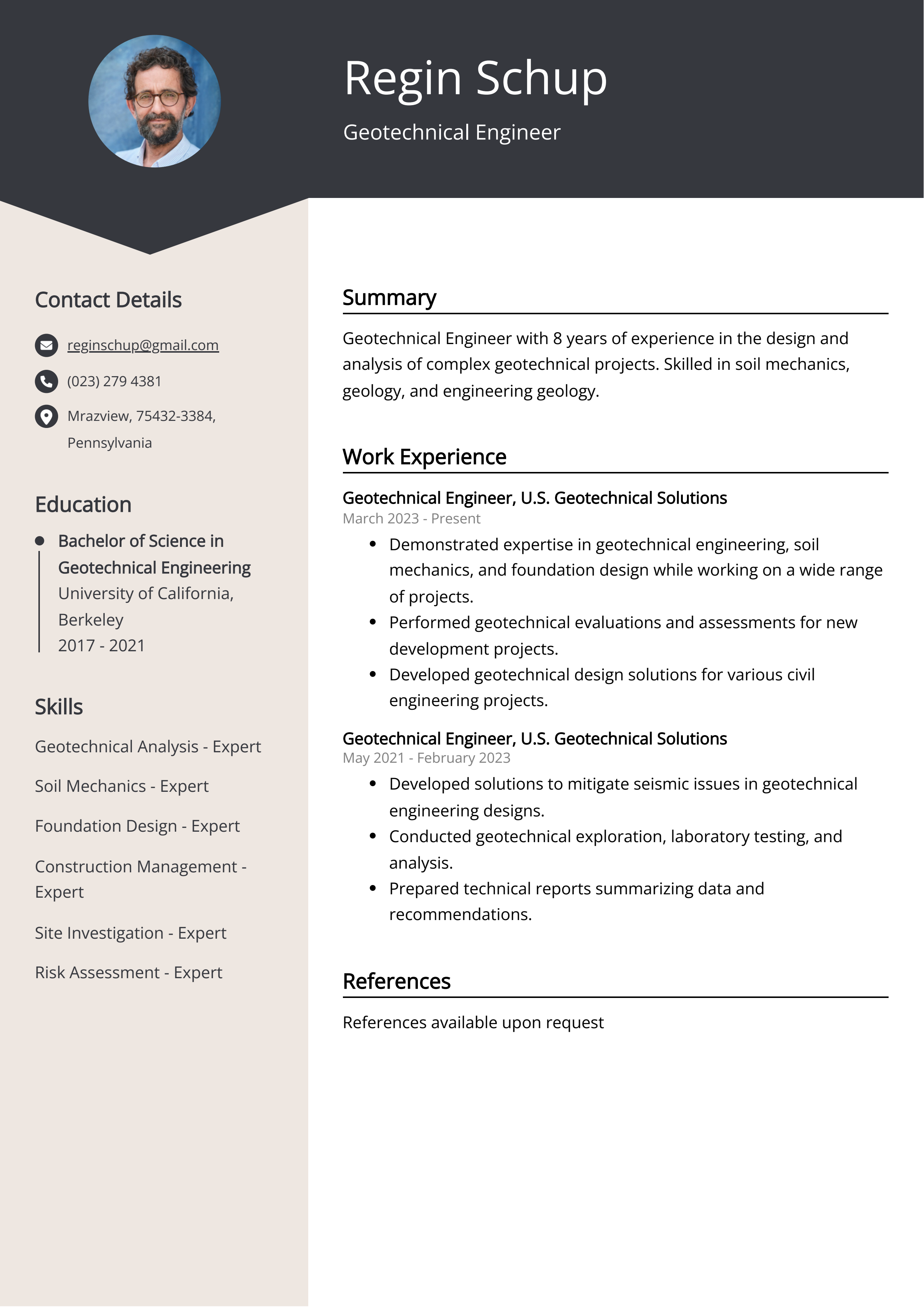Some Known Details About Geotheta
Table of ContentsExcitement About GeothetaWhat Does Geotheta Do?The Of GeothetaGeotheta - TruthsUnknown Facts About Geotheta

They perform site examinations, accumulate samples, perform research laboratory examinations, and evaluate data to evaluate the suitability of the ground for construction tasks - Tailings Engineer. Based on their searchings for, geotechnical designers offer recommendations for foundation layout, slope security, preserving frameworks, and mitigation of geotechnical threats. They work together with other professionals, such as architects, architectural engineers, and construction groups, to make certain that geotechnical considerations are integrated into the overall project design and execution
By evaluating the actions and residential or commercial properties of soil and rock, they can determine possible geotechnical dangers such as landslides, dirt settlement, or incline instability. Their expertise helps prevent failings or accidents that could jeopardize lives and residential property. Right here are some thorough tasks and duties of a geotechnical designer: Website Examination: Geotechnical designers conduct website examinations to collect data on subsurface problems.
They translate the information to comprehend the residential or commercial properties and habits of the soil and rock, including their toughness, leaks in the structure, compaction attributes, and groundwater problems. Geotechnical Analysis and Style: Geotechnical engineers evaluate the information collected during site examinations to analyze the security and viability of the website for building projects. They do geotechnical computations and modeling to assess factors such as birthing capacity, negotiation, slope stability, side planet pressures, and groundwater circulation.
7 Simple Techniques For Geotheta
Foundation Design: Geotechnical designers play a critical duty in making foundations that can safely sustain the intended structure. They analyze the soil problems and tons demands to identify the ideal structure kind, such as superficial structures (e.g., footings), deep foundations (e.g (https://www.imdb.com/user/ur185987626/?ref_=nv_usr_prof_2)., heaps), or specialized methods like soil enhancement. They take into consideration elements such as negotiation limits, birthing capability, and soil-structure interaction to create ideal structure styles
They review building strategies, screen site tasks, and conduct field assessments to verify that the style referrals are adhered to. If unexpected geotechnical problems emerge, they examine the situation and give referrals for remediation or adjustments to the design. Risk Evaluation and Reduction: Geotechnical designers examine geotechnical risks and dangers associated with the project website, such as landslides, liquefaction, or soil erosion.

Cooperation and Communication: Geotechnical engineers function very closely with other experts entailed in a task, such as designers, structural designers, and construction groups. Effective interaction and cooperation are necessary to integrate geotechnical considerations right into the total project layout and building and construction procedure. Geotechnical engineers supply technological know-how, response questions, and guarantee that geotechnical requirements are satisfied.
Geotheta for Beginners
Right here are some sorts of geotechnical engineers: Structure Designer: Foundation designers concentrate on developing and evaluating foundations for frameworks. They examine the soil problems, lots needs, and site characteristics to determine the most suitable foundation kind and design, such as superficial foundations, deep structures, or specialized methods like stack structures.
They assess the factors influencing incline stability, such as dirt homes, groundwater conditions, and incline geometry, and develop strategies to stop incline failures and minimize risks. Quake Designer: Quake engineers focus on assessing and creating frameworks to stand up to seismic pressures. They assess the seismic hazard of a site, evaluate dirt liquefaction possibility, and develop seismic style standards to make sure the safety and strength of frameworks during quakes.
They perform area testing, accumulate examples, and evaluate the gathered data to identify the soil homes, geologic formations, and groundwater problems at a website. Geotechnical Instrumentation Engineer: Geotechnical instrumentation engineers concentrate on tracking and determining the habits of soil, rock, and frameworks. They mount and maintain instrumentation systems that monitor elements such as soil negotiation, groundwater levels, incline motions, and architectural variations to examine efficiency and give early warnings of prospective concerns.
What Does Geotheta Do?
They conduct tests such as triaxial examinations, combination examinations, direct shear examinations, and permeability examinations to collect data for geotechnical analysis and layout. Geosynthetics Designer: Geosynthetics engineers focus on the style and application of geosynthetic materials, such as geotextiles, geogrids, and geomembranes. They utilize these materials to enhance dirt security, reinforce slopes, supply water drainage solutions, and control disintegration.
They have a tendency to be investigative people, which indicates they're intellectual, reflective, and inquisitive. They are curious, systematic, logical, logical, and logical. Some of them are likewise social, indicating they're kind, generous, participating, individual, caring, valuable, understanding, sensible, and friendly - Geotechnical Engineers.
In the workplace setting, geotechnical designers make use of specialized software program tools to execute calculations, develop designs, and analyze information. They prepare reports, testimonial project specifications, communicate with customers and employee, and coordinate task tasks. The workplace setup offers a conducive setting for study, evaluation, and collaboration with various other specialists associated with the task.
The 6-Minute Rule for Geotheta
They regularly visit project websites to perform website investigations, assess geotechnical problems, and gather data for analysis. These sees include traveling to various areas, occasionally in remote or tough terrains. Geotechnical designers might perform soil tasting, conduct examinations, and display construction tasks to ensure that the geotechnical elements of the task are being carried out appropriately.
Geotechnical engineers likewise work in specialized geotechnical laboratories. In these facilities, they conduct experiments, perform tests on dirt and rock samples, and evaluate the design buildings of the products. Geotechnical laboratory engineers function thoroughly in these settings, taking care of testing tools, running tools, and videotaping data. They team up with other research laboratory team to guarantee precise and reputable testing results.